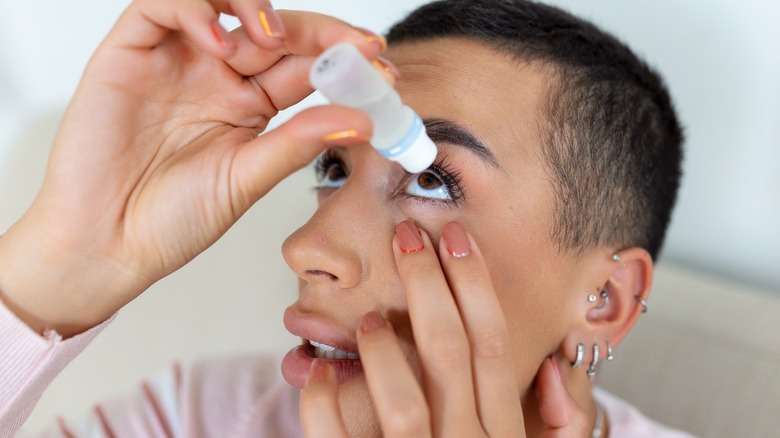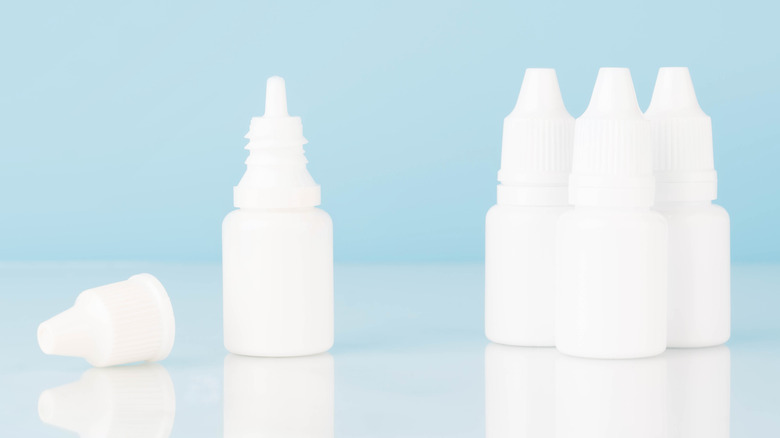How To Properly Put In Eye Drops
If you think eye drops are only good for the occasional bout of dry eyes, you'd be mistaken. While eye drops can certainly help relieve mild discomfort such as itching or redness, they can also be used as medicine by a professional eye doctor (per WebMD). Let's take a look — so to speak — at the different ways eye drops can be used to help take care of our vision.
In a healthcare setting, eye drops may be used by a doctor to help assess and treat certain health conditions. For example, some types of eye exams may warrant their use in order to dilate the pupil or numb the eye, such as during a glaucoma test, notes WebMD. Eye drops can also be used for surgical procedures such as before or after cataract surgery, corneal transplant surgery, or LASIK eye surgery. Your doctor may also suggest eye drops as a treatment for certain eye conditions including conjunctivitis, herpes simplex eye infections, or a cornea infection.
Before utilizing eye drops, be sure to follow all instructions issued by your doctor, advises WebMD. Many eye drops are saline-based, but prescription eye drops may be used to treat inflammatory conditions, viral infections, or bacterial infections and may contain ingredients such as decongestants or antihistamines.
Now that you've got your eye drops in hand, you'll want to make sure you're applying them correctly. Otherwise, you may risk contamination or infection, according to Healthline.
Eye drop prep and aftercare
To start, wash your hands with warm water and soap and dry them thoroughly, instructs Healthline. Before opening, softly shake the bottle if outlined in the directions. After removing the cap, place it down sideways in a clean area.
Tilting your head backward, use one finger to pull down on your lower eyelid to create a gap. This gap is where you will want to aim your eye dropper. With your other hand, hold the bottle upside down over your eye with the dropper angled downwards. To steady your hand, try resting your wrist on your forehead. You'll want to get the dropper as close as you can to the surface of the eye, but without touching it.
Then, keeping your gaze upward, squeeze one drop into the lower eyelid. Afterward, close your eye and tilt your face downwards for two to three minutes. Gently apply pressure to the inside corner of your eye to prevent liquid from making its way into your nasal passages. Wait at least five minutes between drops if more than one is required.
No need to clean the dropper afterward. Simply replace the cap onto the bottle and wash your hands, suggests Healthline. Pay special attention to storage instructions, as experts at U.S. Pharmacists say some eye drops require refrigeration. Remember to keep an eye on the expiration date and to keep your eye drops to yourself. Sharing eye drops is also a good way to share germs.


